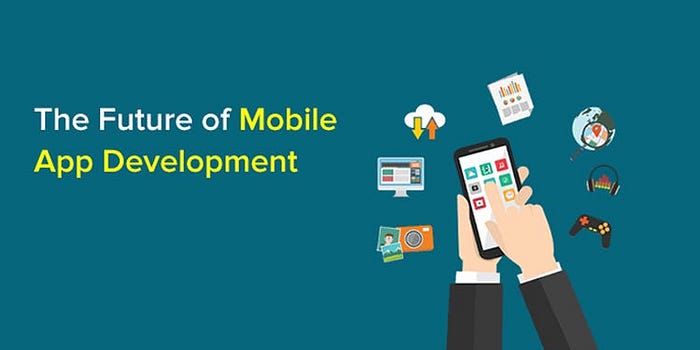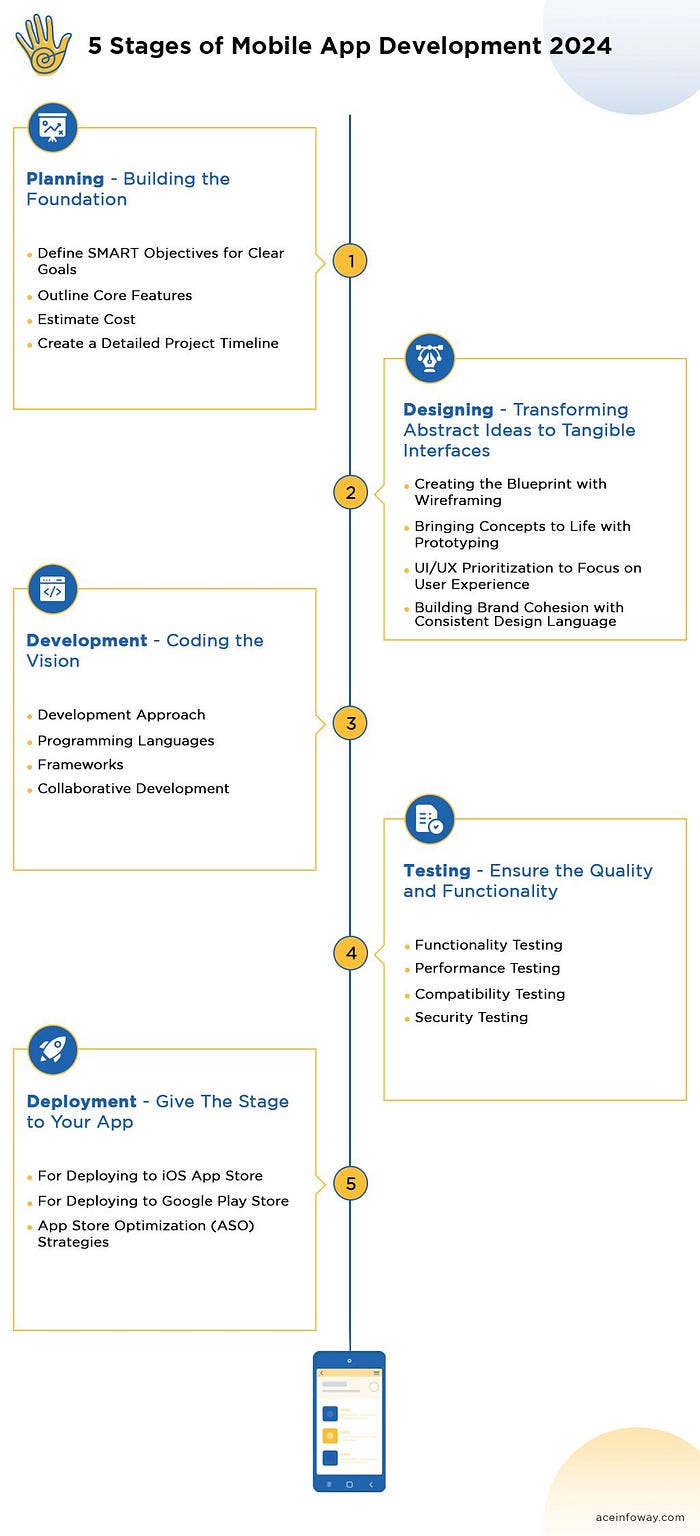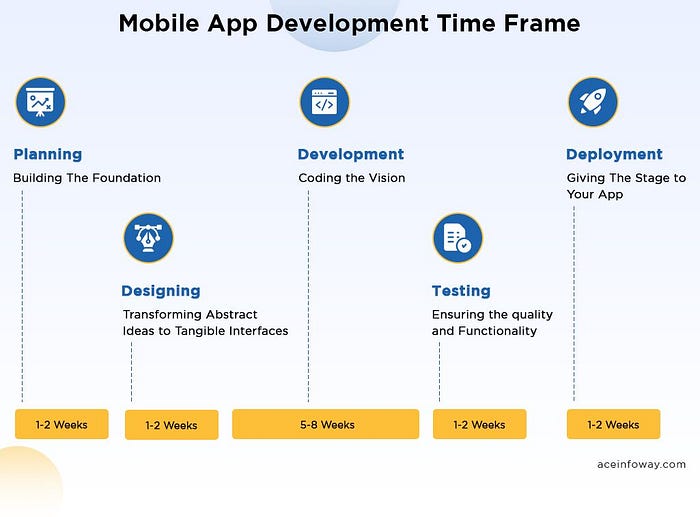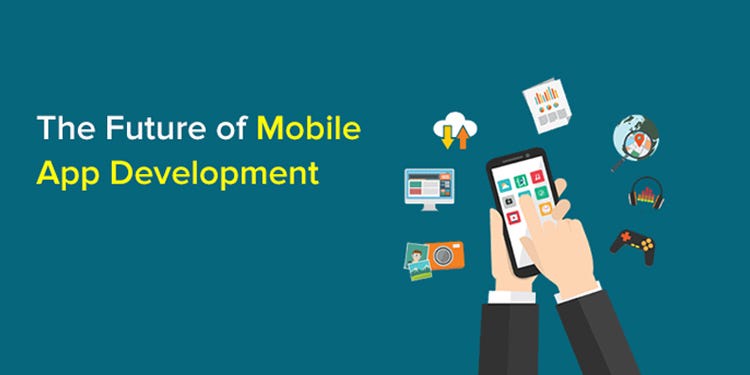
In the year 2024, the anticipated annual revenue from mobile apps is set to reach $171 billion. As businesses and innovators strive to carve out their portion of this flourishing market, it becomes essential to delve into the intricacies of mobile app development. However, laying a solid foundation for innovative apps requires a profound understanding of the current landscape. To create next-generation apps, it is crucial to familiarize oneself with some of the most prevalent trends in the industry.
Contemporary businesses are reshaping user experiences by incorporating Artificial Intelligence (AI) and Machine Learning (ML) for hyper-personalization, integrating Augmented Reality (AR) technology to craft immersive interfaces, embracing the transformative capabilities of 5G networks, and adopting predictive analytics to elevate User Interface/User Experience (UI/UX), thereby fostering increased engagement and user retention. These emerging trends in mobile app development represent a pivotal stride toward enhancing user satisfaction and interaction in the digital realm.
What are the 5 Stages of Mobile App Development?

Step 1: Planning — Building the Foundation
1) Define SMART Objectives for Clear Goals
- Specific Objectives: Clearly state what the app intends to achieve. For instance, if the goal is to increase user engagement, specify the methods and metrics to measure engagement.
- Measurable Metrics: Establish quantifiable parameters such as user engagement rates, app downloads, or revenue. These metrics provide tangible data to evaluate the app’s performance.
- Achievable Targets: Set realistic goals that are attainable within the available resources and technological constraints. Unrealistic objectives can lead to frustration and project delays.
- Relevance: Ensure the goals align with the app’s purpose, user needs, and market demands. Relevance ensures that efforts are channeled toward meaningful outcomes.
- Time-Bound Deadlines: Implement a strict timeline by breaking down the goals into manageable milestones within designated timeframes. Time-bound objectives provide a sense of urgency and facilitate progress tracking.
2) Outline Core Features
- User Research: Conduct in-depth research to understand user preferences, pain points, and expectations. User research helps in identifying features that directly cater to user needs.
- Market Demands: Align features with current market trends and demands. Market analysis tools aid in identifying features that are popular among users, ensuring the app remains relevant and competitive.
- Prioritization: Rank features based on their importance and relevance to the core app functionality. Prioritizing features ensures that the most essential elements are developed first, optimizing the app’s user experience.
- Scalability: Consider how features can accommodate future enhancements without requiring major changes to the app’s architecture. Scalable features allow for the app’s evolution in response to changing user demands.
3) Estimate Cost
- Development Costs: Evaluate expenses related to coding, programming languages, third-party integrations, and app functionalities. This assessment helps in budgeting the development phase effectively.
- Design Expenses: Include costs associated with UI/UX design elements, graphic assets, and branding materials. A visually appealing design enhances user engagement and satisfaction.
- Infrastructure Costs: Account for server space, databases, APIs, and cloud services. Infrastructure costs ensure the app’s seamless functioning and data management.
- Contingency Budget: Allocate a portion of the budget for unforeseen expenses and emergencies. A contingency budget provides financial preparedness for unexpected challenges, preventing budget overruns.
4) Create a Detailed Project Timeline
- Milestone Setting: Divide the project into specific milestones, each representing a significant phase of development. Milestones provide clear markers of progress.
- Deadline Assignments: Assign realistic deadlines for each milestone. Deadlines create a sense of urgency, ensuring tasks are completed in a timely manner.
- Regular Progress Tracking: Implement regular progress checks against the established timeline. Regular tracking identifies potential delays and allows for corrective actions, maintaining project momentum.
- Flexibility: While adhering to deadlines is essential, maintain flexibility to adapt the timeline based on unexpected challenges or opportunities. Flexibility ensures adaptability to evolving project requirements.
Full Article available to read here:
Crafting Next-Gen Mobile Apps: A 5-Stage Blueprint for 2024
Step 2: Designing — Transforming Abstract Ideas to Tangible Interfaces

1) Creating the Blueprint with Wireframing
- Skeletal Structures: Wireframes are like the architectural blueprints of the app. They are basic, low-fidelity layouts representing the structure of the user interface. Wireframes outline where elements like buttons, menus, and images will be placed, focusing purely on layout and functionality.
- Focus on Functionality: Wireframes prioritize the arrangement of elements to ensure logical flow and ease of use. They act as a visual guide for developers, ensuring the app’s fundamental structure is sound before moving to more detailed design stages.
2) Bringing Concepts to Life with Prototyping
- Interactive Prototypes: Prototyping involves creating interactive, high-fidelity mockups of the app. These prototypes simulate the app’s functionality, allowing users to interact with the interface as they would in the actual app. Prototyping tools like InVision or Figma enable the development of clickable prototypes.
- User Testing and Feedback: Prototypes are invaluable for user testing. They allow developers to gather feedback from potential users, evaluate how intuitive the navigation is, and identify pain points. Iterative prototyping, based on user feedback, refines the app’s design, ensuring it meets user expectations.
3) UI/UX Prioritization to Focus on User Experience
- Intuitive Navigation: Users should be able to navigate the app without confusion. Intuitive navigation ensures that users can easily find what they’re looking for. Clear menu structures, intuitive buttons, and logical pathways enhance user experience.
- Responsive Design: With the plethora of devices and screen sizes, responsive design ensures the app adapts seamlessly to different screens. Elements should resize and reorganize intelligently, providing a consistent experience across devices.
- Visually Appealing Interfaces: Aesthetics matter. Visual elements, such as color schemes, typography, and imagery, should be thoughtfully chosen to create an appealing visual experience. Engaging visuals enhances user satisfaction and contributes to the overall user perception of the app.
4) Building Brand Cohesion with Consistent Design Language
- Aligning with Brand Identity: The app’s design elements, including colors, fonts, and imagery, should align harmoniously with the overall brand identity. Consistency in design reinforces brand recognition and creates a cohesive user experience across all touchpoints.
- Creating a Unified Experience: Users should feel a sense of continuity as they transition from the app to other brand platforms. A consistent design language ensures that users can recognize and connect with the brand, fostering trust and loyalty.
Step 3: Development — Coding the Vision

1) Development Approach
- Native Development: Native apps are platform-specific, built for a particular operating system, like iOS or Android. They are optimized for the specific platform, utilizing platform-specific APIs and tools. This approach ensures maximum performance and access to native device features but requires separate development for each platform, often doubling the development effort.
- Hybrid Development: Hybrid apps are built using web technologies (HTML, CSS, JavaScript) and are wrapped in a native container. Tools like React Native and Flutter allow developers to create hybrid apps, providing a balance between platform independence and native-like performance. Hybrid apps can run on both iOS and Android platforms, sharing a significant portion of the codebase.
- Web Development: Web apps are accessed through web browsers on various devices. They are platform-independent and can be built using web technologies. Web apps are versatile and can be accessed from any device with a compatible browser. However, they may have limited access to device-specific features compared to native or hybrid apps.
2) Programming Languages
- Swift (iOS): Swift is Apple’s programming language specifically designed for iOS, macOS, watchOS, and tvOS app development. It is known for its speed and safety features, making it a preferred choice for iOS app developers.
- Kotlin (Android): Kotlin is a modern programming language endorsed by Google for Android app development. It is interoperable with Java, which means developers can use Kotlin alongside existing Java codebases. Kotlin is lauded for its conciseness and enhanced safety features.
- JavaScript (Web): JavaScript is the backbone of web development. It is a versatile scripting language used for creating interactive and dynamic web content. In the context of mobile apps, JavaScript is often used for web-based applications and in conjunction with frameworks like React Native.
3) Frameworks
- React Native: Developed by Facebook, React Native allows developers to build mobile apps using JavaScript and React. It offers a rich set of components and enables the creation of cross-platform apps, sharing a substantial portion of the codebase between iOS and Android.
- Flutter: Created by Google, Flutter is a UI toolkit that enables the development of natively compiled applications for mobile, web, and desktop from a single codebase. Flutter uses the Dart programming language and offers a rich set of pre-designed widgets for building intuitive user interfaces.
4) Collaborative Development
- Version Control Systems (e.g., Git): Version control systems like Git enable multiple developers to collaborate on a single project simultaneously. Developers can work on different parts of the codebase independently, and changes are merged systematically. Git also tracks changes, allowing for easy rollback if issues arise.
- Agile Methodologies: Agile development is an iterative approach where the project is divided into small increments with minimal planning and changes can be made as the project progresses. Agile methodologies, including Scrum and Kanban, promote collaboration, adaptability, and continuous feedback. They allow development teams to respond promptly to changing requirements and deliver a high-quality product in an agile and efficient manner.

How Long It Takes: Mobile App Development Timeframe

In the intricate world of mobile app development, planning sets the stage, followed by the creative design process. Development breathes life into the concept, testing ensures perfection, and deployment brings the app to the users’ fingertips. Each step is a vital stitch in the vibrant tapestry of app creation, weaving innovation and functionality seamlessly into every pixel and code.
Post-Launch Essentials:
1) Social Media Promotion:
- Engagement: Developers actively engage with the audience through social media platforms. They share updates, respond to user comments, and conduct polls or contests to maintain a strong social media presence.
- Content Strategy: Engaging content, such as videos, blog posts, and infographics, is created and shared across social media channels. Content showcases app features, user testimonials, and industry-related news to capture users’ interest.
2) Influencer Marketing:
- Identifying Influencers: Developers identify influencers whose audience aligns with the app’s target demographic. Influencers are approached for collaborations, including sponsored posts, reviews, or endorsements.
- Authenticity: Authentic partnerships are emphasized, ensuring influencers genuinely appreciate the app and can provide sincere endorsements. Authenticity fosters trust among the influencer’s audience.
3) App Analytics:
- Implementation: Analytics tools (e.g., Google Analytics for Mobile Apps, Flurry Analytics) are integrated into the app. Custom events and user interactions are tracked to gather data on user behavior, retention rates, popular features, and app performance.
- Data Analysis: Developers analyze user data to gain insights into user engagement patterns. This analysis informs decisions regarding feature enhancements, marketing strategies, and user experience improvements.
Steps to Mobile App Maintenance
1) Regular Updates:
- Feature Enhancement: Regular updates introduce new features, enhancements, and optimizations. Developer responses to user feedback and emerging trends inform feature prioritization and implementation.
- Bug Fixes: Bugs reported by users or identified through analytics are addressed promptly. Developers conduct rigorous testing to ensure bug fixes do not introduce new issues.
2) User Feedback Analysis:
- Feedback Channels: Developers collect feedback through app store reviews, in-app feedback forms, and customer support channels. Feedback is categorized, analyzed, and prioritized based on the frequency and severity of issues reported.
- Iterative Improvement: User feedback guides iterative improvements. Developers incorporate user suggestions and address pain points, enhancing the app’s functionality and user experience.
3) Ongoing Maintenance:
- Server Maintenance: For apps with server-side components, regular maintenance of servers ensures optimal performance and minimal downtime. Security patches and updates are applied to protect against vulnerabilities.
- Adaptation to OS Updates: Developers monitor platform updates (iOS, Android) and adapt the app to new APIs and guidelines. Compatibility with the latest OS versions is essential to maintain functionality.
Final Thoughts
Building a successful app can be a challenging endeavor. Whether you’re venturing into app development for the first time or have a history of creating multiple applications, there’s always room for growth and enhancement. Instead of making uninformed decisions about your choice of an app development partner, it’s wise to educate yourself about the process.
At Ace Infoway, we specialize in transforming app ideas into reality. Let our experts guide you through the complexities of app development, ensuring your vision translates into a seamless, user-friendly, and innovative application. Get in touch with us today to embark on your app development journey.


No comments yet